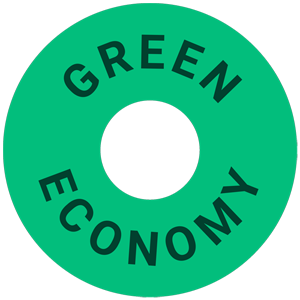The world’s waterways are littered with monumental quantities of plastic pollution and tackling this crisis poses many difficulties. We investigate the extent of the issue and the potential solution to this growing catastrophe.
What is a microplastic?
The official definition of a microplastic is a piece of plastic less than five millimetres in diameter. They have a broad variety of commercial uses, including cosmetic and beauty products, microfibres from clothing and textiles, and products with oceanic uses, such as fishing equipment.
Microplastics are divided into primary and secondary. Primary microplastics are designed for commercial use and are intended for use in the manufacture or development of a product; these are estimated to represent between 15-31 pr cent of ocean microplastics. Secondary microplastics result from the degradation of larger plastic items and account for 69-81 per cent of ocean microplastics.
Where do microplastics come from?
Some microplastics come from larger plastic pieces which are broken down over time by ultraviolet light from the sun, ocean wave action, and salt, leading to an abundance of microscopic plastic pieces littering the ocean’s surface. Large plastic items that commonly find their way into oceans and lakes include plastic bottles, bags, fishing nets, and packaging, all of which are broken down into microplastics at a later stage.
The materials used to manufacture clothes has a major impact on the amount of microplastics released. Synthetic clothing that uses plastic-based textiles release microfibres from abrasion and general wear. These synthetic fibres include polyester, nylon, viscose, acrylic and elastane.
But it's not just the textiles industry with a part to play. A study by SUEZ UK calculated that, by 2030, UK tyre wear will have accounted for up to 350,000 tonnes of ocean microplastics, increasing to 850,000 tonnes by 2050. This equates to one third of all microplastics released into UK waters originating from tyre wear particles.
Microbeads, are another contributor to water-borne microplastics. These small pieces of manufactured polyethene plastic are used as exfoliants in health and beauty products. They slip through water filtration systems to pollute oceans and lakes. Research into plastic pollution from the United Nations Environment Programme highlighted that plastic microbeads have been causing problems since their introduction roughly 50 years ago. While microbeads have continued to replace natural ingredients, offering a cheaper alternative, the extent of the problem has only been acknowledged in recent years.
Why is this a problem?
Microplastics are extremely difficult to remove from the oceans. They pose a substantial threat to marine life and cannot be taken out of the ocean once they have made their way in, meaning they need to be stopped at their source to prevent plastic pollution levels from increasing further.
An estimated 5.25 trillion plastic particles reside in the world’s oceans, weighing more than 269,000 tonnes, but microplastics don’t just live on the surface. Bacteria and algae latch onto microplastics and increase their weight, causing them to sink to the ocean floor. The depths of the ocean are now contaminated with plastic pollution causing serious problems for ocean-bed biodiversity.
Marine animals are unable to identify microplastics and distinguish them from food. Consequently, microplastics were found in over 220 marine species worldwide. A UK study found that every marine animal tested had ingested microplastics, with nylon, most likely originated from rope and fishing nets, clothing microfibres and toothbrush bristles, making up 60 per cent of microplastics found.
How can we reduce their impact?
Members of European Parliament approved a plastic strategy in September 2018 aiming to crack down on plastic waste, which included a wider call to ban all intentionally added microplastics in products by 2020. While this serves to reduce the addition of microplastics in the future, it does not address the problem of microplastics that have already entered the ocean.
The UK has implemented a variety of tactics to inhibit plastic pollution and reduce the quantity of microplastics entering our waterways, including a microbead ban, plastic-free supermarket aisles, a ban on plastic straws, a ban on cotton buds (Scotland only), and the expansion of the 5p carrier bag charge to discourage consumers from using disposable plastic shopping bags.
For businesses and consumers that are concerned about plastic pollution here are some of the ways you can help.





